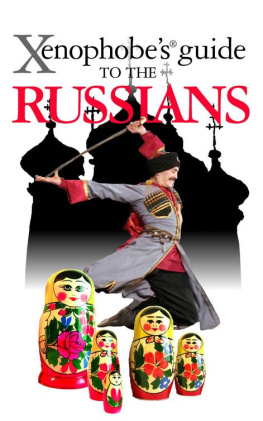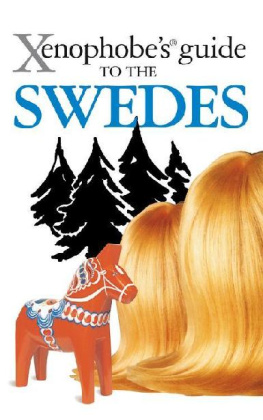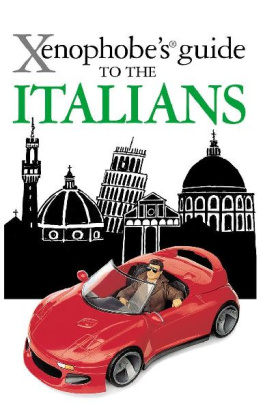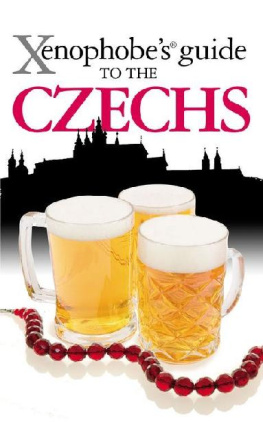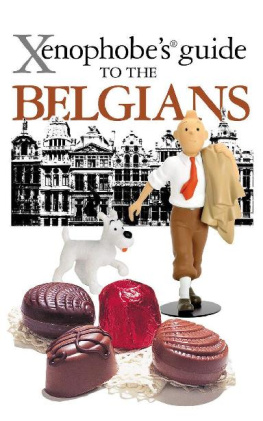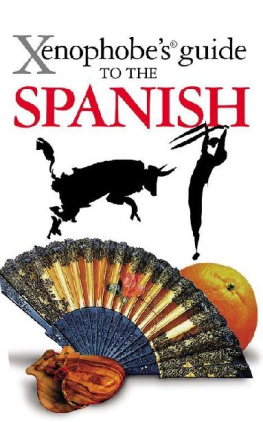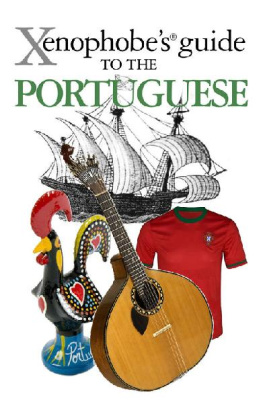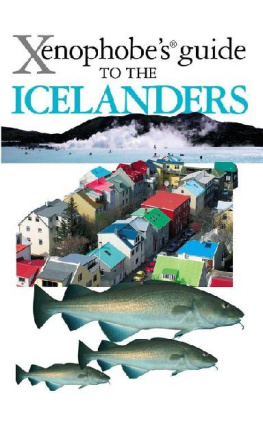Hilary Bird - Xenophobes Guide to the Estonians
Here you can read online Hilary Bird - Xenophobes Guide to the Estonians full text of the book (entire story) in english for free. Download pdf and epub, get meaning, cover and reviews about this ebook. year: 2011, publisher: Oval Books, genre: Detective and thriller. Description of the work, (preface) as well as reviews are available. Best literature library LitArk.com created for fans of good reading and offers a wide selection of genres:
Romance novel
Science fiction
Adventure
Detective
Science
History
Home and family
Prose
Art
Politics
Computer
Non-fiction
Religion
Business
Children
Humor
Choose a favorite category and find really read worthwhile books. Enjoy immersion in the world of imagination, feel the emotions of the characters or learn something new for yourself, make an fascinating discovery.
- Book:Xenophobes Guide to the Estonians
- Author:
- Publisher:Oval Books
- Genre:
- Year:2011
- Rating:4 / 5
- Favourites:Add to favourites
- Your mark:
- 80
- 1
- 2
- 3
- 4
- 5
Xenophobes Guide to the Estonians: summary, description and annotation
We offer to read an annotation, description, summary or preface (depends on what the author of the book "Xenophobes Guide to the Estonians" wrote himself). If you haven't found the necessary information about the book — write in the comments, we will try to find it.
Xenophobes Guide to the Estonians — read online for free the complete book (whole text) full work
Below is the text of the book, divided by pages. System saving the place of the last page read, allows you to conveniently read the book "Xenophobes Guide to the Estonians" online for free, without having to search again every time where you left off. Put a bookmark, and you can go to the page where you finished reading at any time.
Font size:
Interval:
Bookmark:
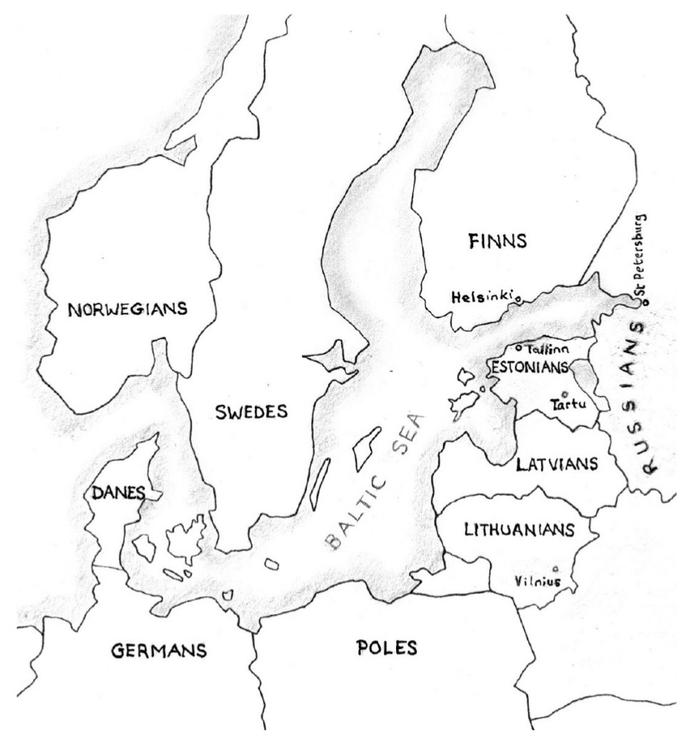
The population of Estonia is 1.3 million, compared with 2.2 million Latvians, 3.5 million Lithuanians, 82 million Germans, 140 million Russians and 307 million Americans.
Estonia is slightly bigger than Denmark and has a coastline fragmented with 1,521 islands. Legend has it that a giant who lived on the second largest island wanted to link it to the largest one to visit his family and friends, so he threw stones into the sea to create a causeway. It was never finished.
Although Estonia is a young nation, the Estonians are not a young people. Heaped on the bedrock of prehistoric origins are layers and layers of cultures and traditions either adapted or lifted lock, stock and barrel from the many invaders who have ruled the Estonian roost for the better part of the last millennium . This melange congealed at some time during the Soviet era into a romanticised ideal of what Estonians were like when Estonians were really Estonian hardworking, honest and severe, living a simple life on the land and squabbling with their neighbours as depicted in the great Estonian novel Truth and Justice, an everyday story of hardship, gritty perseverance, and swamp drainage.
Although Estonia is a young nation, the Estonians are not a young people.
Although the Estonian tribes have lived on their own lands for 10,000 years, 700 of these nameless years were spent in slavery. There was no history of Estonia before 1918 because there was no Estonian nation.
Estonian national pride is demonstrated in national symbols the national flag (each house has a bracket for the blue, black and white tricolour that is trotted out on high days and holidays), the national coat of arms (three lions passant), the national bird (the barn swallow), the national stone (limestone), the national drink (beer), the national food (pork, potatoes and cabbage), and so on.
Estonians see themselves as tough, stern, self-sufficient northern people the last of the Vikings.
All these things, according to the Estonians, are pure Estonian. Never mind that France, Italy, Russia and Germany have tricolours, never mind that the coat of arms strongly resembles that of Denmark, never mind that the national bird nests all over Europe, that the national flower the cornflower is scattered in cornfields throughout Europe, that their national drink is quaffed all over the world, or that the common spud was embraced everywhere in the mid 19th century. The important thing is that these items are now firmly entrenched in the modern Estonian psyche as exclusively and uniquely Estonian. Do not try and argue. Its an utter waste of time; you simply will not be believed.
Estonians see themselves as tough, stern, self-sufficient northern people the last of the Vikings. It is even posited that the word Viking comes from the Estonian vee king meaning water shoe and referring to the shoe-shaped hulls of their wooden boats. The Swedes, the Norwegians and the Danes may play down their violent past but the Estonians remember with pride a raid in 1187 when they burned down Sigtuna, what was then the capital of Sweden.
Real Estonians are tough. The men eat meat, drink strong beer and down glasses of vodka in one gulp. They use a dry lavatory at the end of a frozen, slippery path in the dead of winter and dont even think about soft toilet paper.
In their heart of hearts the Estonians know they are odd and dont quite fit the standard Euro-model or any other.
Estonians look affectionately on their fictitious national hero a naive, laddish figure called the Son of Kalev. He appears regularly in the media clad in his linen tunic and brimless Estonian cap, his beer paunch hanging over a belt covered in ancient symbols, grinning cheerfully and waving his blood sausage (national food) as he strides towards the Eiffel Tower, the Colosseum, Big Ben and the Brandenburg Gate to take Estonias place amongst the family of European nations. But, in their heart of hearts the Estonians know they are odd and dont quite fit the standard Euro-model or any other, for that matter.
Estonian individuality was demonstrated admirably at an International Architecture Biennial in Venice. Amongst the outpourings of serious contemporary offerings, the Estonian pavilion proudly fielded a display of dry toilets outhouses that ranged from a glass cubicle (thankfully opaque) lit by candles standing in a field of snow, to a rustic Pegasus which one entered beneath a raised twig tail.
Small is beautiful to an Estonian and Everything is local is a slogan guaranteed to sell anything. Estonians would read the telephone directory with the rapt attention commanded by a great thriller if it was the directory of their own home town.
Estonians would read the telephone directory if it was the directory of their own home town.
The Estonians are determined that whatever has been salvaged from their turbulent past that is 100% Estonian (and theres not a lot) will be preserved. Hence their insistence that would-be citizens speak a modicum of Estonian. It is when Estonians speak and, more especially, sing, that they connect with their ancient birthright.
Folk culture constantly reminds them that my little home is tiny but is big enough for the missus, the kids, the pig, dog, cat and me. The British may sing about ruling the waves, the Americans about amber waves of grain, but Estonian national songs laud the local pond, the cherry tree in the yard and their very own boulder in the Baltic Sea.
For centuries the Estonians loathed the Germans, the first people to intrude on their freedom and disenfranchise them in their own lands. The sins of the Germans, however, paled into insignificance in the 20th century when Estonia was annexed into the USSR. The Soviet Russians did what had been impossible for 700 years. They made the Estonians love the Germans.
There are 140 million Russian citizens living next door making a scary ratio of 1:140 in favour of The Bear.
Much as they would like to, Estonians cannot ignore their Eastern neighbour. There are 140 million Russian citizens living next door making a scary ratio of 1:140 in favour of The Bear. Estonians feel that, at best, Russians are a noisy, sloppy lot, always on the bottle, producing bad quality goods and with gardens full of weeds. All Estonians agree that Russians are unpredictable and not to be trusted.
The presence in Estonia of ethnic Russians (just under three out of every ten residents) whose loyalty is far from assured makes the Estonians even twitchier. Tension between the two communities rarely develops into bloody-nose territory. Serious clashes usually come at a much higher level, when Moscow decides to admonish its erstwhile colony as if it was an errant child. The exception that proved the rule was a riot of (mostly) young Russians that attended the removal in 2007 of the metal man (a Soviet-era war memorial) from the centre of Tallinn, followed by a wave of violent protests outside the Estonian embassy in Moscow. But this was only one side of the story. The morning after the outburst, anxious and vastly outnumbered ethnic Estonians in a tower block in Tallinn woke up to find that their Russian neighbours had left bunches of flowers outside their front doors by way of apology.
The Estonians see the Finns as rather stuffy and call them pder (moose).
Relations with Finland are cordial. Finnish TV served as a window to the free world for 50 years and practically every Estonian has been to Finland. The Estonians see the Finns as rather stuffy and call them
Font size:
Interval:
Bookmark:
Similar books «Xenophobes Guide to the Estonians»
Look at similar books to Xenophobes Guide to the Estonians. We have selected literature similar in name and meaning in the hope of providing readers with more options to find new, interesting, not yet read works.
Discussion, reviews of the book Xenophobes Guide to the Estonians and just readers' own opinions. Leave your comments, write what you think about the work, its meaning or the main characters. Specify what exactly you liked and what you didn't like, and why you think so.



